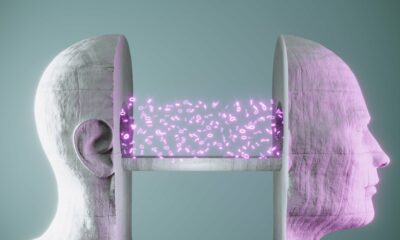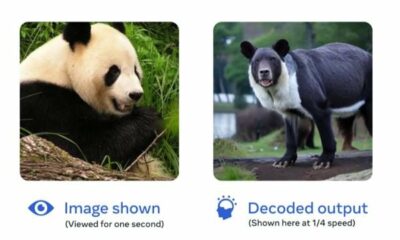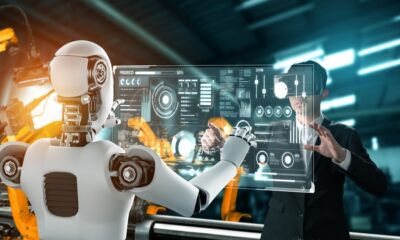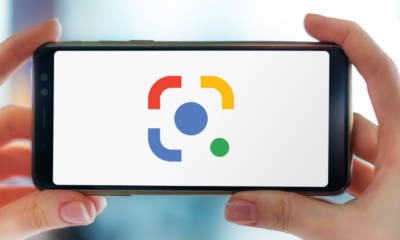TECHNOLOGY
Smarter Machines = Smarter Humans

The ability of machines to communicate—and their increasing intelligence—is an exponentially accelerating trend spanning many industries.
This trend is not slowing down in any way, and the more it is adopted, the more it will continue to accelerate, transforming our personal, professional, and social lives.
Machines communicating with other machines really means next to nothing without a human being in the equation. Whether an individual works with this technology at their place of business or benefits from it by way of everyday conveniences, intelligent technology already touches all our lives today in some capacity.
But if you are an avid reader of my blog, you know that nothing stands still in this digitally disruptive world for long. So, here’s the question I always ask: Where are we headed next with intelligent software, machines, and their impact on our lives?
The Internet of Things Defined
Machine intelligence and machine communication are more easily defined as the Internet of Things (IoT), more commonly known today as the Internet of Life. IoT has the powerful ability to simplify daily tasks, make things safer, and enhance our lives overall, and much of it is a result of the collection of personal data.
Using this data, machines follow a series of algorithms to “learn” from your habits. At its beginning, IoT-based technology was pretty simplistic — John or Jane Smith enjoys a certain product from Store A, and whether they Googled it on their smartphone or posted about it on Facebook, that data was recognized by the individual’s smartphone, thus targeting ads toward them during their screen time.
As IoT applications evolved, soon this elementary implementation of smart software became commonplace, and before long we started to see Smart Home software and hardware, which allowed you to interact with your devices via voice recognition. Now, IoT applications can recognize your voice and your habits, and this once-revolutionary breakthrough is now as common as having a microwave in your kitchen and a TV in your bedroom.
IoT and TSA: Facial Recognition Software Speeding Things Along
Perhaps you are familiar with Smart Homes and the seamless experience offered by this personalized technology. However, you may be less aware of a huge development in the IoT space that promises to transform an extremely agitating travel rigor — making it just as easy as your smart fridge letting you know you are low on milk.
Clear — a company that has developed software and hardware that uses your eyes and fingerprints to verify your identity — is now found in over 40 airports in the United States, checking registered guests more quickly than any TSA pre-check line can move. Instead of the traditional way to move through security when flying nationally or internationally, Clear has created a system that eliminates a step from the process — checking IDs — using my Skip It Principle.
This company is also acting in an Anticipatory fashion at the time of this writing, as they are in the process of rolling out smart device applications that create a virtual ID for many other circumstances, such as verifying that you are of legal drinking age or checking in at hotels before you ever arrive.
Finding Your Place in Tech Now and in the Future
It’s possible that Clear’s IoT is striking fear in the hearts of TSA agents. A TSA agent reading this may be thinking: “But what if I can’t invent something to disrupt Clear or the applications replacing my career? How can I still anticipate and stay ahead of the curve?”
It is human nature to dread the unknown. This primordial apprehension is often the result of overthinking what we cannot fully prove to be a non-threatening occurrence. Time and again, however, these fears prove irrational once we know what to expect. In other words, hindsight is 20/20.
Using an Anticipatory Mindset helps with this uncovering process, and the first part of that process is always figuring out what exactly is behind something you are unsure about — to lift the veil of mystery.
The TSA agent’s fear is certainly warranted, especially since IoT, artificial intelligence, machine learning, and communication between devices eliminate nominal tasks that may make up the entirety of a person’s role at an organization.
Transformation Will Never Stop, and It Shouldn’t Stop You!
My advice to all of you feeling this apprehension is to constantly stay educated. Getting a firm grasp on disruptive digital transformations — such as machine intelligence, the Internet of Things, and communication between devices — allows you to more easily find your professional and personal place in the equation.
But because of how quickly changes happen once a disruptive digital technology takes hold, learning something once and then tabling it is not the answer.
The rapid acceleration of intelligent machines and software means that new opportunities that come with these technologies are everywhere and are moving even faster, and you need to use your human competencies in critical thinking and continuing education to be the smartest in the equation.
What you must do is start with my Hard Trend Methodology to deduce exactly what the opportunity is and pre-solve the problems you may face, so all that is left once you have leveraged a digital disruption is a positive, transformative result that impacts your customers, your industry, and humanity for the better.
Source link


















You must be logged in to post a comment Login